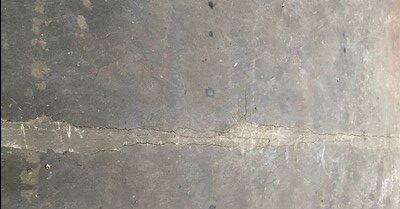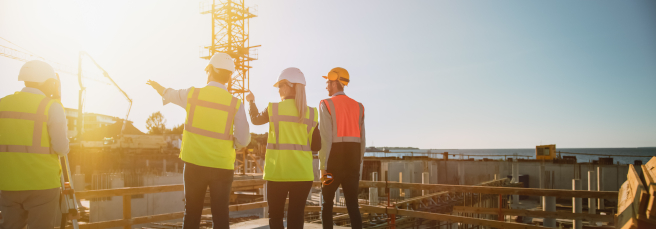

Subsidence is the steady downward movement of a building or structure caused by changes in soil conditions or underlying ground movement. As the ground moves lower, the foundations of the building can become misaligned. This process may cause the walls and floors to move, which can lead to cracks and cause the building to be unstable.
There are several common reasons for building subsidence:
- Following a drought, the soil can dry out causing subsidence
- Vibrations in the ground caused by passing traffic or excavations
- Heavy rain or leaking drains have damaged the soil and its foundations
- Old mines or quarries can cause instability as the material used to fill the site will move as it decomposes
- Trees might be planted too close to the property, plants drain the moisture from the soil causing it to dry out and sink
- The age and construction of the building can be a risk as the older the building is the more risk that the foundations are shallower. However, older buildings tend to be built from bricks and lime mortar which tend to be more flexible
- New homes or extensions can often experience cracking as the structures settle under their own weight.
Subsidence usually occurs in majority clay or silt soil as these are both cohesive, which enables them to swell and shrink when wet or dry. This is the surface where the biggest changes can be seen. Subsidence can also be mistaken for heave; however, this is the opposite, as this is when the ground swells upwards. This is usually due to the clay soil becoming wetter than usual.
Signs of Subsidence
There are many signs of subsidence that can either occur on the outside or inside of the building. The severity of the problem can be identified based on the visible signs.
If subsidence has occurred, cracks are likely to have appeared in the walls. Not all cracks can be a sign of subsidence. The cracks will usually be diagonal and visible on internal and external surfaces. They tend to be wider than 3mm and can usually be found in close proximity to a door or window.
Another telling sign is sloping or sinking floors. These can be easy to identify as the floor may appear uneven and gaps may emerge near the skirting. A further key indication is sticking doors or windows. This can be due to movement within the building or due to the warping of the frames as the building sinks.
The next image shows movement between the slab joints to a distance of approximately 60mm. Repairs had been carried out previously however the movement continued thereafter.

The image to the below shows substantial stepped cracking down to the floor slab level, which is an indication that the wall is pulling in different directions. Based on information we received from a structural engineer the site is located in a high risk area for coal mining, which is a possible cause for the subsidence.

What effect does subsidence have on the building’s operation?
If subsidence occurs beneath a business structure, it must be addressed quickly and effectively to avoid any revenue loss and associated costs to the owner or occupier. The loss is frequently substantially more than the cost of repair. Sloping floors can be disruptive for machinery and similar operations which can slow down productivity. To ensure there is no risk to the business or the staff and to keep a safe working environment action must be taken as soon as it has been identified.
How to prevent subsidence?
Whilst not all subsidence can be prevented, a few measures can be taken to ensure the building is protected and prevent longer term difficulties. Tree management is a crucial but easy solution to preventing subsidence. Depending on a number of factors such as the ground surface material, tree species and the tree location can determine whether a building is at risk of subsidence. We would recommend seeking professional advice from a tree specialist before any work is undertaken. As well as this, it is also a good idea to prevent any leaks by ensuring that the gutters, plumbing and pipework are all maintained can be a quick solution to a bigger problem.
What to do if subsidence occurs?
While identifying a fix for subsidence isn’t quick or easy, if the damage is only minor and can be easily determined then repairs can usually be carried out immediately.
Research has shown that tree roots are the cause of the majority of subsidence cases. This is due to the roots drawing in the moisture from the ground surface beneath the building, this issue can worsen when there is a dry period. In certain situations, the tree can be removed and this may solve the problem, however this could lead to heave. A tree specialist should always be contacted to provide advice regarding this issue.
In a worst case scenario, the building may need to be underpinned. This is a disruptive procedure and can be expensive with costs reaching £50,000 is certain circumstances. The Royal Institute of Chartered Surveyors (RICS) estimate that less than 10% of properties that are found to have subsidence need underpinning.
In the case of the above and if damage is severe then the movement of the building may need to be monitored over a longer period. This is to help structural engineers determine a longer term solution to help solve the issue.
Regardless of the fix your insurer should be contacted straight away so that they can arrange a survey and help you come to the right solution.
DISCLAIMER: This article is for general information only and not intended as advice. Each project has its own set of unique circumstances, all potential issues should be investigated by a surveyor on a case by case basis before making any decision.





